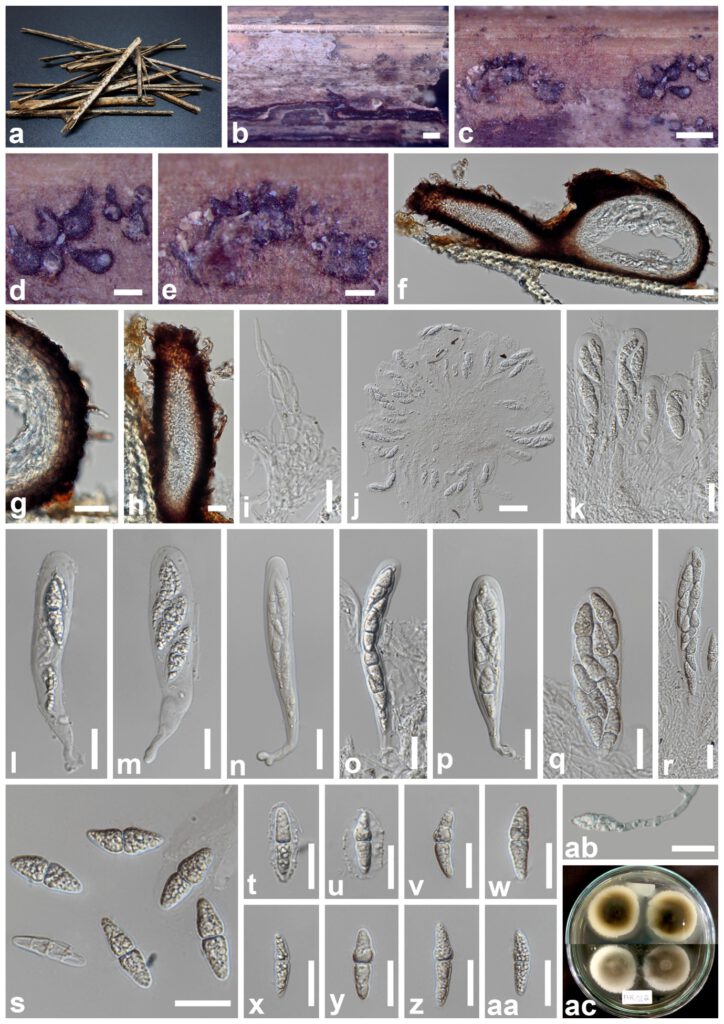Acrocalymma arengae Konta & K.D. Hyde. sp. nov.
MycoBank number: MB 559674; Index Fungorum number: IF 559674; Facesoffungi number: FoF 10819;
Etymology: Refers to the host genus Arenga.
Holotype: MFLU 15-0302.
Saprobic on dead of Arenga pinnata. Sexual morph: Ascomata 400–500 × 135–170 μm (x̅ = 455 × 150 μm, n = 10), dark brown, gregarious, immersed beneath host epidermis, visible as numerous, raised, dome-shaped areas on host surface, obpyriform to ampulliform, uni-loculate, rough walls with setae, coriaceous, ostiolate. Ostioles 200–222 × 60–80 μm μm (x̅ = 215 × 70 μm, n = 10), centrally located, filled with hyaline cells, periphyses. Peridium 18–27 µm wide (x̅ = 23 μm, n = 10), composed of dark brown to black cells, arranged in textura globulosa to textura angularis. Hamathecium composed of 1.8–2.7 µm wide (x̅ = 2.1 μm, n = 10), numerous, filamentous, branched, septate, pseudoparaphyses. Asci 65–185 × 15–27 μm (x̅ = 115 × 20 μm, n = 30), 1–8-spored, bitunicate, cylindric to clavate, club shape pedicel, apically rounded with an ocular chamber. Ascospores 33–36 × 10.5–7 μm (x̅ = 30 × 10 μm, n = 30), overlapping 1–2-seriate, hyaline to pale brown, fusiform with acute ends, 1–3-septate, constricted at the septum, rough-walled, surrounded by a thick mucilaginous sheath. Asexual morph: Undetermined.

Fig. XX Acrocalymma arengae (MFLU 15-0302, holotype). a–b Appearance of ascomata on host substrate. c–e Close up of ascomata. f Section of ascoma. g Peridium. h Ostiole. i Pseudoparaphyses. j–r Asci. s–aa Ascospores. ab Germinated ascospore. ac Colonies on MEA. Scale bars: b = 1,000 μm, c = 500 μm, d, e = 200 μm, f–i, k–ab = 20 μm, j = 50 μm.
